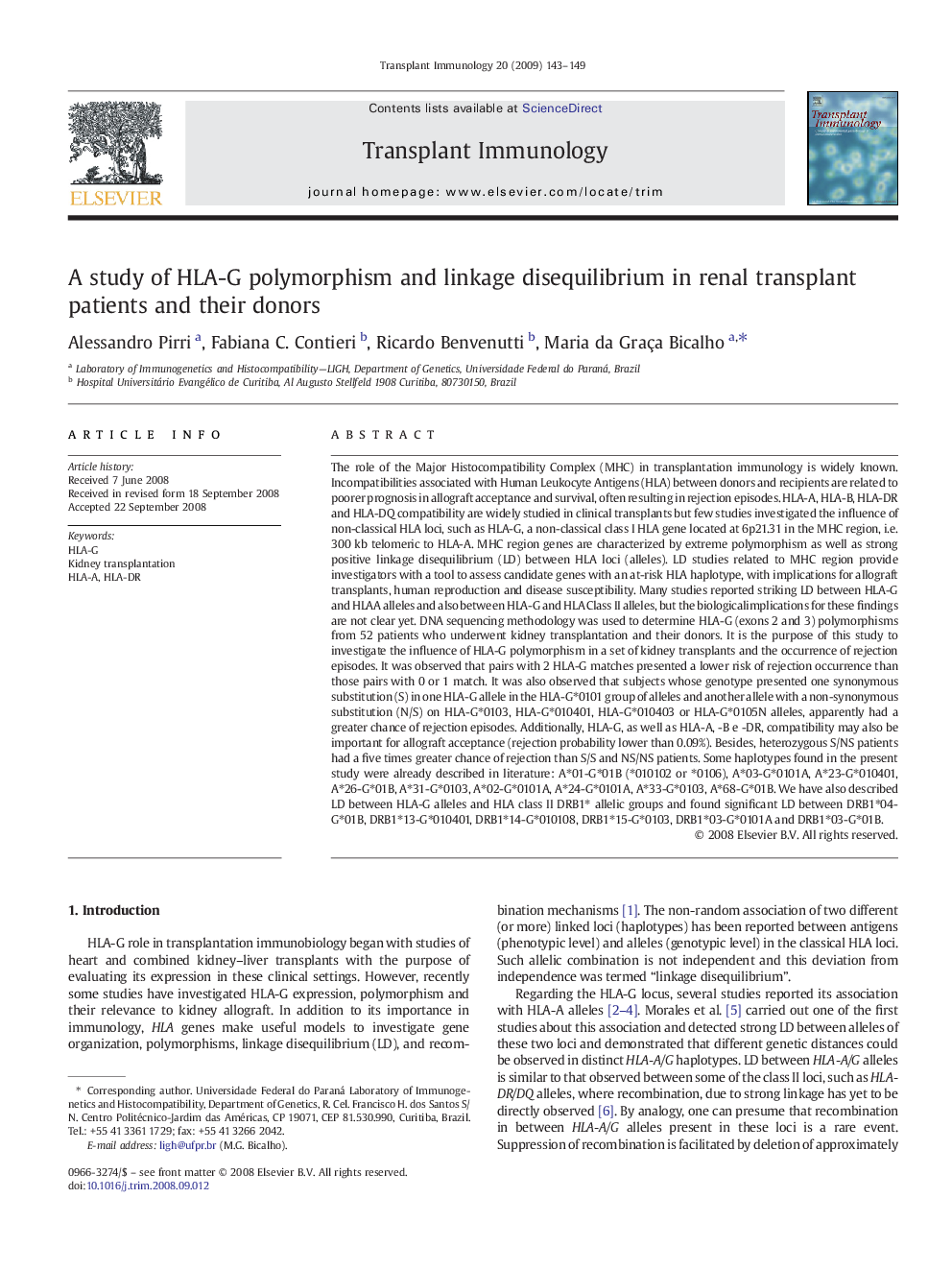| Article ID | Journal | Published Year | Pages | File Type |
|---|---|---|---|---|
| 3392448 | Transplant Immunology | 2009 | 7 Pages |
The role of the Major Histocompatibility Complex (MHC) in transplantation immunology is widely known. Incompatibilities associated with Human Leukocyte Antigens (HLA) between donors and recipients are related to poorer prognosis in allograft acceptance and survival, often resulting in rejection episodes. HLA-A, HLA-B, HLA-DR and HLA-DQ compatibility are widely studied in clinical transplants but few studies investigated the influence of non-classical HLA loci, such as HLA-G, a non-classical class I HLA gene located at 6p21.31 in the MHC region, i.e. 300 kb telomeric to HLA-A. MHC region genes are characterized by extreme polymorphism as well as strong positive linkage disequilibrium (LD) between HLA loci (alleles). LD studies related to MHC region provide investigators with a tool to assess candidate genes with an at-risk HLA haplotype, with implications for allograft transplants, human reproduction and disease susceptibility. Many studies reported striking LD between HLA-G and HLAA alleles and also between HLA-G and HLA Class II alleles, but the biologicalimplications for these findings are not clear yet. DNA sequencing methodology was used to determine HLA-G (exons 2 and 3) polymorphisms from 52 patients who underwent kidney transplantation and their donors. It is the purpose of this study to investigate the influence of HLA-G polymorphism in a set of kidney transplants and the occurrence of rejection episodes. It was observed that pairs with 2 HLA-G matches presented a lower risk of rejection occurrence than those pairs with 0 or 1 match. It was also observed that subjects whose genotype presented one synonymous substitution (S) in one HLA-G allele in the HLA-G⁎0101 group of alleles and another allele with a non-synonymous substitution (N/S) on HLA-G⁎0103, HLA-G⁎010401, HLA-G⁎010403 or HLA-G⁎0105N alleles, apparently had a greater chance of rejection episodes. Additionally, HLA-G, as well as HLA-A, -B e -DR, compatibility may also be important for allograft acceptance (rejection probability lower than 0.09%). Besides, heterozygous S/NS patients had a five times greater chance of rejection than S/S and NS/NS patients. Some haplotypes found in the present study were already described in literature: A⁎01-G⁎01B (⁎010102 or ⁎0106), A⁎03-G⁎0101A, A⁎23-G⁎010401, A⁎26-G⁎01B, A⁎31-G⁎0103, A⁎02-G⁎0101A, A⁎24-G⁎0101A, A⁎33-G⁎0103, A⁎68-G⁎01B. We have also described LD between HLA-G alleles and HLA class II DRB1⁎ allelic groups and found significant LD between DRB1⁎04-G⁎01B, DRB1⁎13-G⁎010401, DRB1⁎14-G⁎010108, DRB1⁎15-G⁎0103, DRB1⁎03-G⁎0101A and DRB1⁎03-G⁎01B.
